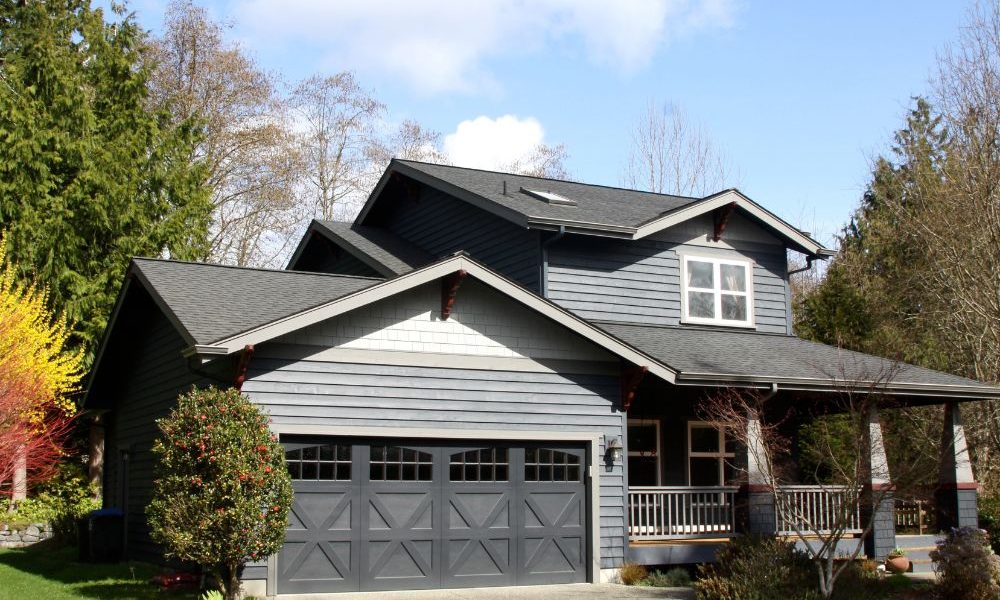Choosing the perfect architectural style for your dream home is an exciting journey. Each style has its own unique personality, reflecting different eras, cultures, and design philosophies. As Frank Lloyd Wright once said, “Every house is a sculpture, and every room a jewel” (Source: Frank Lloyd Wright Foundation). This guide will help you decode various architectural styles, providing insights and personal anecdotes to help you find the one that resonates with you.
1. Colonial Style
Colonial architecture is one of the most enduring styles in the United States, characterized by its symmetry, classic proportions, and simple, rectangular shape. Originating in the 1600s, this style often features a centered front door, evenly spaced windows, and a gable roof.
Key Features
- Symmetrical facade
- Gable roof
- Centered front door with decorative crown
- Shutters on windows
When I was a child, we lived in a charming Colonial home. I remember the large, welcoming front porch where we spent countless summer evenings. The symmetrical design gave the house a sense of balance and stability, which made it feel like a true family home.
Jeanne Gang, an architect, believes that “architecture is about creating spaces that inspire and uplift people” (Source: Studio Gang). Colonial homes often do just that with their timeless appeal and harmonious design.
2. Victorian Style
Victorian architecture, popular during the reign of Queen Victoria (1837-1901), is known for its ornate details, asymmetrical shapes, and vibrant colors. This style often includes intricate woodwork, decorative trim, and steep gable roofs.
Key Features
- Decorative trim and woodwork
- Asymmetrical facade
- Steep gable roofs
- Stained glass windows
- Turrets or towers
My grandparents’ Victorian home always felt like a fairytale castle to me. The intricate details and colorful exterior made it stand out in the neighborhood. Exploring the house was like discovering hidden treasures in each room.
Zaha Hadid famously said, “Architecture is not about space but about time” (Source: Zaha Hadid Architects). Victorian homes capture a moment in history, offering a glimpse into the past with their detailed craftsmanship.
3. Modern Style
Modern architecture emerged in the early 20th century, emphasizing clean lines, minimalism, and the integration of indoor and outdoor spaces. This style often features large windows, open floor plans, and the use of materials like steel, glass, and concrete.
Key Features
- Clean, geometric lines
- Open floor plans
- Large windows for natural light
- Minimalist aesthetic
- Use of industrial materials
When my partner and I decided to build our dream home, we chose a modern design. The open floor plan and large windows create a seamless flow between the indoors and outdoors, making our home feel spacious and bright.
Bjarke Ingels, an architect, explains, “Architecture is the art of compromise. You have to balance beauty, function, and sustainability” (Source: Bjarke Ingels Group). Modern homes often strike this balance beautifully, combining aesthetic appeal with practical living spaces.
A study by the University of Cambridge explored how different architectural styles can evoke different emotions and affect our behavior (Source: University of Cambridge). Modern architecture, with its emphasis on simplicity and light, often promotes a sense of calm and clarity.
4. Mediterranean Style
Mediterranean architecture is inspired by the coastal regions of Spain, Italy, and Greece. Known for its stucco walls, red tile roofs, and arched windows and doorways, this style exudes warmth and relaxation.
Key Features
- Stucco walls
- Red tile roofs
- Arched windows and doorways
- Courtyards and balconies
- Ornate details and wrought iron
During a vacation in Southern California, we stayed in a beautiful Mediterranean-style villa. The stucco walls and red tile roof, combined with lush gardens and outdoor courtyards, made it feel like a private retreat.
Frank Lloyd Wright stated, “Every house is a sculpture, and every room a jewel” (Source: Frank Lloyd Wright Foundation). Mediterranean homes often reflect this sentiment with their detailed craftsmanship and inviting spaces.
The University of Pennsylvania found that architecture can create a sense of place and community (Source: University of Pennsylvania). Mediterranean homes, with their emphasis on outdoor living and communal spaces, foster a strong sense of community and connection.
5. Craftsman Style
The Craftsman style, emerging in the early 20th century, is known for its handcrafted details and emphasis on natural materials. This style features low-pitched roofs, wide eaves, and exposed wooden beams.
Key Features
- Low-pitched, gabled roofs
- Wide, overhanging eaves
- Exposed wooden beams
- Handcrafted stone and woodwork
- Built-in furniture and cabinetry
My aunt’s Craftsman bungalow has always been one of my favorite places. The cozy, handcrafted details and the use of natural materials make it feel warm and inviting. The built-in bookshelves and window seats add character and charm.
Rem Koolhaas said, “Architecture is a way of thinking about the world, of making sense of chaos” (Source: Office for Metropolitan Architecture). The Craftsman style, with its focus on simplicity and craftsmanship, brings a sense of order and harmony to its surroundings.
A study by the University of Waterloo found that people who live in homes with high architectural quality report higher levels of well-being and life satisfaction (Source: University of Waterloo). Craftsman homes, with their attention to detail and use of natural materials, often contribute to a higher quality of life.
6. Mid-Century Modern Style
Mid-Century Modern architecture, popular from the 1940s to the 1960s, is characterized by clean lines, open spaces, and a connection with nature. This style often features flat planes, large glass windows, and minimal ornamentation.
Key Features
- Flat planes and geometric lines
- Large glass windows
- Open floor plans
- Minimal ornamentation
- Integration with nature
Our family home was a Mid-Century Modern house with large windows that brought in plenty of natural light. The open floor plan made it perfect for hosting gatherings and the connection with the outdoors created a serene environment.
Jeanne Gang believes that “architecture is about creating spaces that inspire and uplift people” (Source: Studio Gang). Mid-Century Modern homes, with their emphasis on open spaces and natural light, often provide uplifting living environments.
The Lighting Research Center found that natural light can improve mood, productivity, and sleep quality (Source: Lighting Research Center). Mid-Century Modern homes, with their expansive windows, often maximize natural light, contributing to these benefits.
7. Farmhouse Style
Farmhouse architecture combines traditional and modern elements to create a cozy, rustic feel. This style features large front porches, gabled roofs, and practical, spacious interiors.
Key Features
- Large front porches
- Gabled roofs
- Exposed wooden beams
- Practical, spacious interiors
- Use of natural materials
During a trip to the countryside, we stayed in a charming farmhouse with a large front porch and a cozy interior. The use of natural materials and rustic charm made it feel like a home away from home.
Bjarke Ingels explains, “Architecture is the art of compromise. You have to balance beauty, function, and sustainability” (Source: Bjarke Ingels Group). Farmhouse style homes often achieve this balance by combining aesthetic appeal with practical living spaces.
The University of Michigan found that the design of a building can encourage or discourage social interaction among its occupants (Source: University of Michigan). Farmhouse homes, with their inviting porches and communal spaces, often encourage social interaction and community.
Conclusion
Choosing the right architectural style for your dream home is a deeply personal decision that reflects your tastes, lifestyle, and values. By understanding the key features and benefits of each style, you can find the one that best suits your vision. Remember, as Frank Lloyd Wright said, “Every house is a sculpture, and every room a jewel” (Source: Frank Lloyd Wright Foundation).
Explore these styles and let your dream home’s personality shine through, creating a space that not only looks beautiful but also feels like home.



